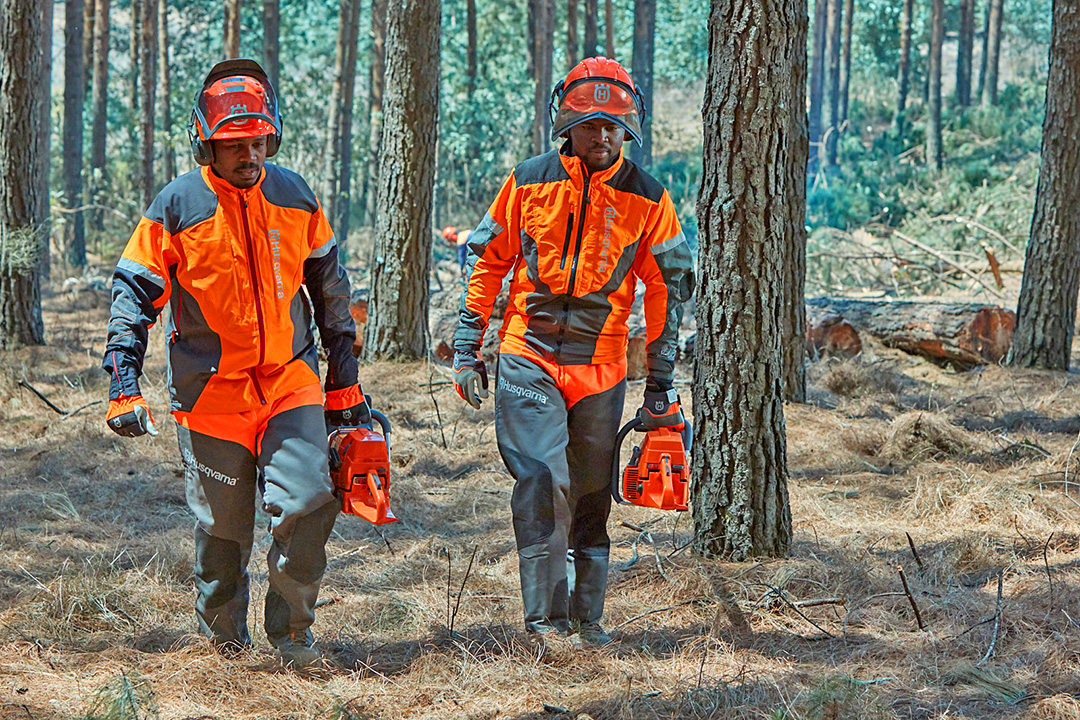Chainsaw safety: Tips and requirements you need to know
Chainsaws have the strength and power to cut down trees and remove branches, but there are huge responsibilities that go along with this. Chainsaw safety is crucial. Take time to familiarise yourself with basic safety precautions and personal protection equipment (PPE), which are your shield when operating a chainsaw, before you start your next cutting activity.
Since a chainsaw is a power tool, operating it safely starts by treating it with respect. The following are some essential tips to remember:
- Go through the operator’s handbook carefully – Each chainsaw model has unique features and safety precautions. Read the user handbook properly to become familiar with the features, maintenance schedule, and safety warnings.
- Plan your cuts – Before starting, make sure your workspace is free of obstructions and that you can visualise the cuts you will need to make.
- Never use a chainsaw when you’re tired or intoxicated – Chainsaws demand concentration and sound judgement. Do not use the saw when you are tired, stressed, or under the influence of alcohol.
- Maintain your chainsaw – For the best results and safety, regular maintenance is needed. Clean the air filters, tension the chain, and sharpen the blades. Visit our servicing experts at Cutting Edge if you’d rather leave it to the pros.
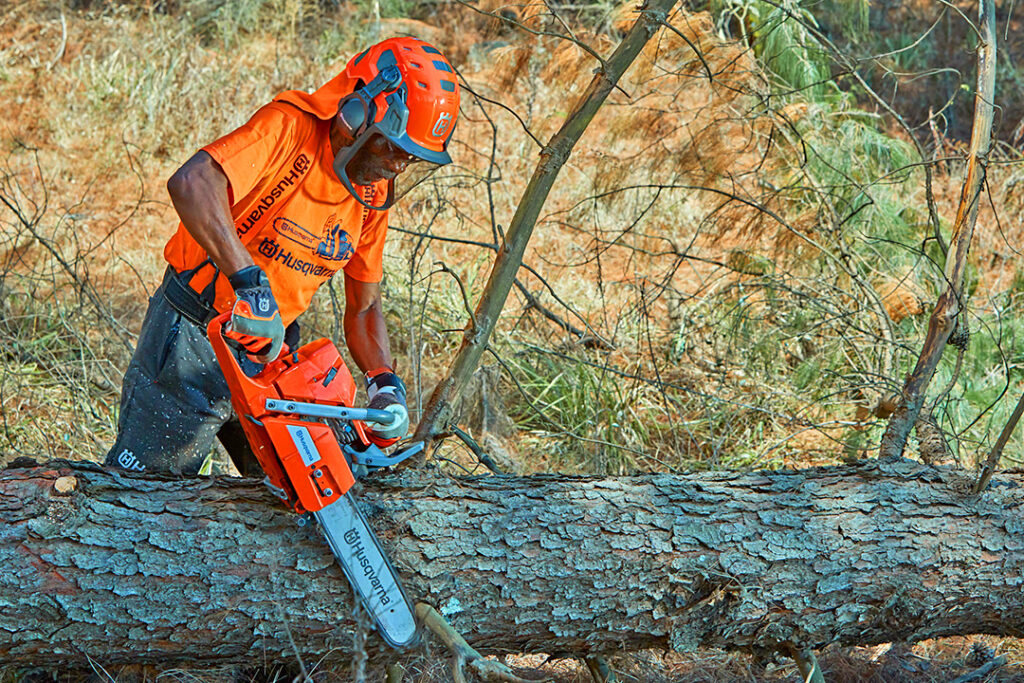
Must-have safety PPE for chainsaw operators
A chainsaw operator shouldn’t begin cutting without the appropriate PPE. The following is a summary of the safety equipment you should wear:
- Helmet – You must wear a forestry helmet with a visor and ear protection. Your face is protected from flying debris by the visor, and noise exposure is reduced with ear protection. In Zimbabwe’s warm climate, choose a helmet with a mesh back for breathability.
- Goggles – These provide an additional layer of protection for your eyes, even when used with a helmet visor. Choose impact-resistant safety goggles that slide over your visor securely.
- Safety chaps – These specialised chaps are constructed from a unique material that is intended to halt a chainsaw in the case of unintentional contact. They are necessary to prevent major injuries to your legs.
- Gloves – Protect your hands from cuts and scrapes with thick, cut-resistant gloves. Choose a pair that will allow you to hold onto the chainsaw handles securely and with good dexterity.
- Safety boots – Steel-toed boots guard against debris and falling trees. When walking crossing uneven terrain, your boots need adequate traction and sufficient ankle support.
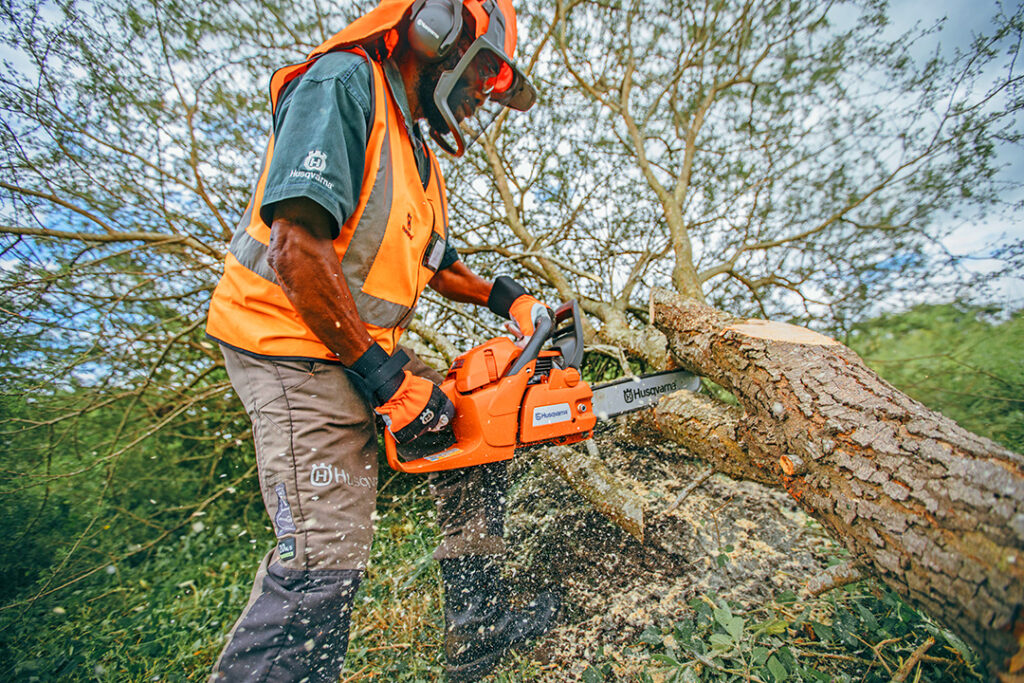
Advice for professional and safe cutting
Now that you’re prepared with the right knowledge and PPE, you need to know how to operate a chainsaw safely and effectively. Start with body position; keep your knees slightly bent and your feet shoulder-width apart for a sturdy posture. Use both hands to hold the chainsaw handles firmly.
Keep in mind the kickback zone. This is the space behind the handle and bar. Avoid anything that could cause the saw to kick back, and never stand directly in this zone. Now you can follow the start-up protocols. Always stick to the suggested guidelines provided in the operator’s manual. This usually entails starting the engine, setting the saw down on a solid surface, and applying the chain brake.
Next, use the right cutting methods for various situations, including felling trees, limbing branches, and bucking logs. The risk of injury and accidents is increased by using improper techniques. For thorough instruction, think about enrolling in a chainsaw safety course at Cutting Edge.
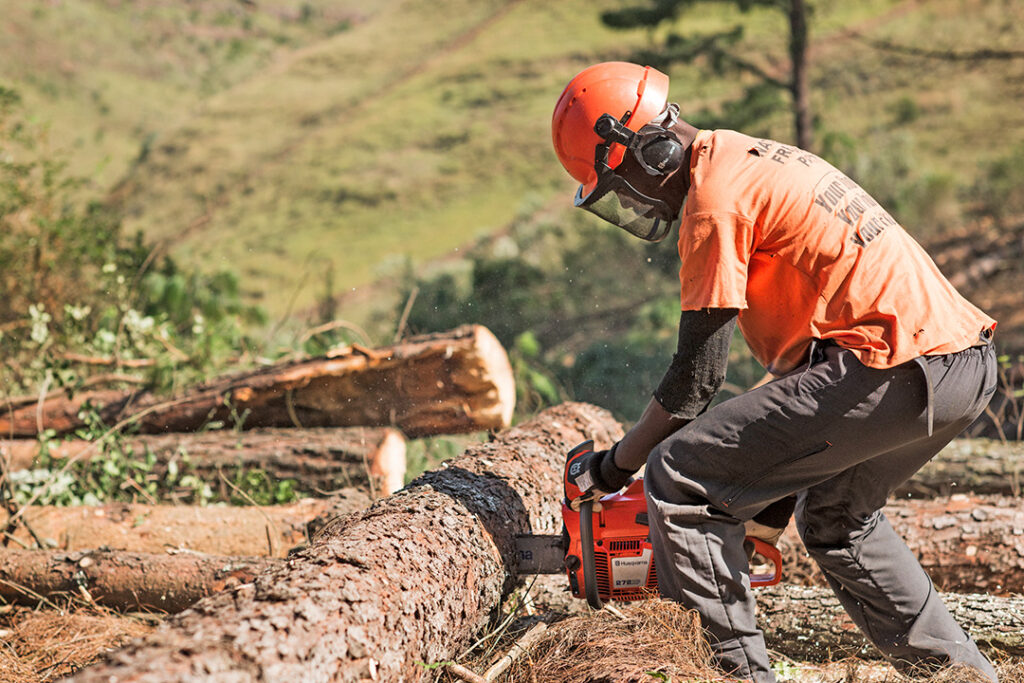
Before making a cut, think about your escape route in case the tree starts to fall suddenly. If at all possible, work with someone who can support you and call for assistance in an emergency. Teamwork makes the dream work.
Remember, a blunt chain makes cutting more difficult and raises the possibility of backlash. To ensure maximum performance and safety, make sure your chainsaw blade is sharpened correctly before each use.
Watch out for pinch points; avoid any circumstances that could cause the chainsaw to get pinched between branches or logs. This may result in injury and a loss of control. To help you avoid this, keep your workspace tidy and get rid of any loose debris, branches, and rocks.
Lastly, be sure to refuel your chainsaw away from heat sources and in a well-ventilated place. Before refuelling, turn off the engine and let it cool. Always take breaks – using a chainsaw can be physically exhausting – so take a breather to stay focused and prevent fatigue.
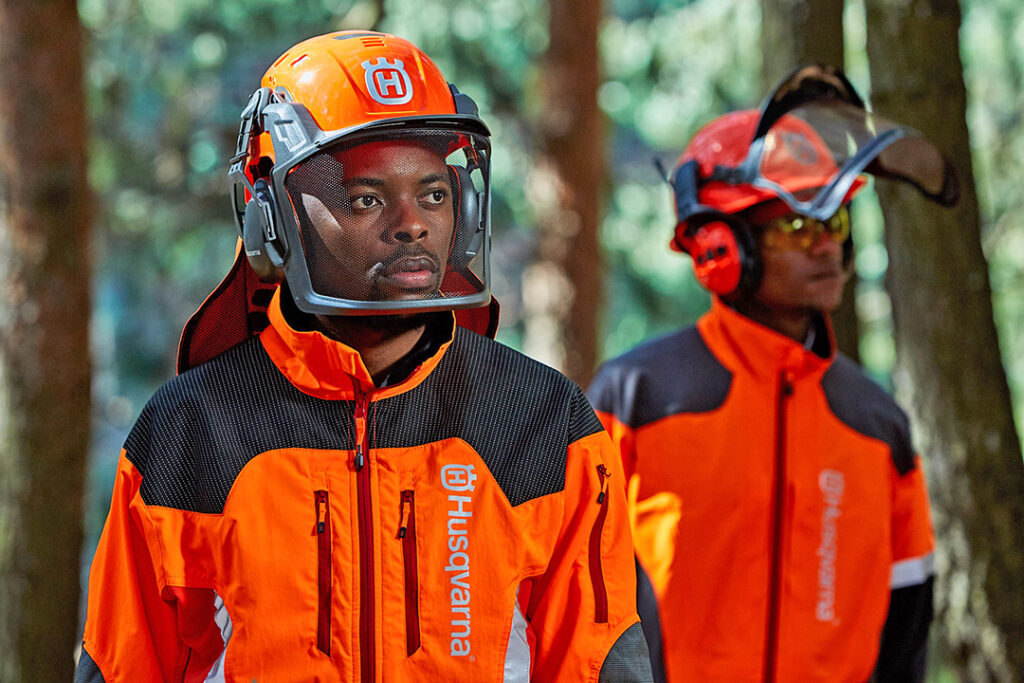
Cutting Edge is committed to your safety
Cutting Edge offers safety guidelines and training courses on our range of Husqvarna chainsaws. These powerful and world-class cutting tools are ideal for Zimbabwe’s forestry, agricultural and homeowner demands.
Our friendly team is available to address any concerns you may have about chainsaw safety and suggest the best PPE for your requirements. We stock an extensive range of Husqvarna chainsaw safety gear, such as chaps, boots, gloves, goggles, and helmets.
We also offer professional servicing of chainsaws to ensure that your Husqvarna runs efficiently. We have a local network of dealers and servicing centres that can offer these services near you. Prioritising safety and arming yourself with the necessary information and equipment will help you make sure your chainsaw is a reliable tool for your tasks rather than a possible source of harm. Visit our showroom at 159 Citroen Road, Msasa, to browse our range of cutting machines or contact us today to learn more.
___
Cutting Edge is the leading supplier of Husqvarna products in Zimbabwe. We bring you the best tools in the business with world-class service and after sales care. Follow us on Facebook and Instagram for the latest news and product offerings from our brands.

